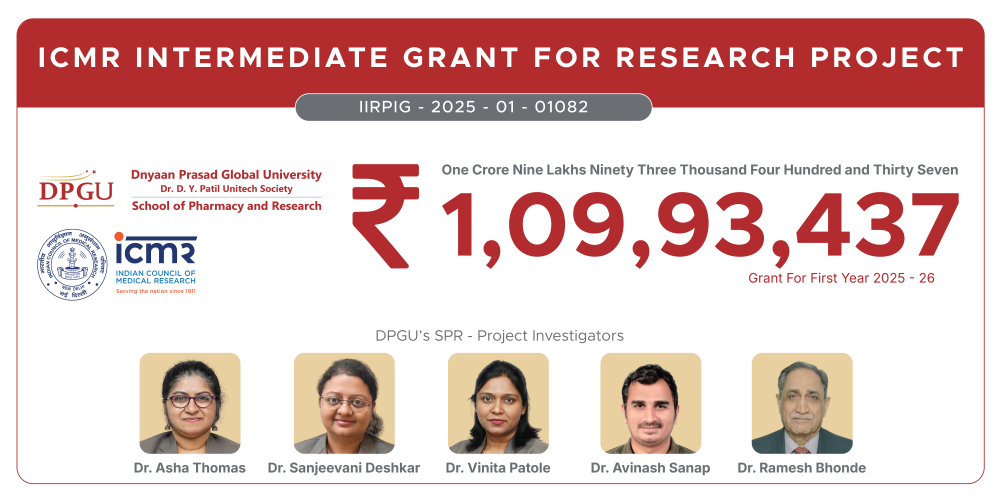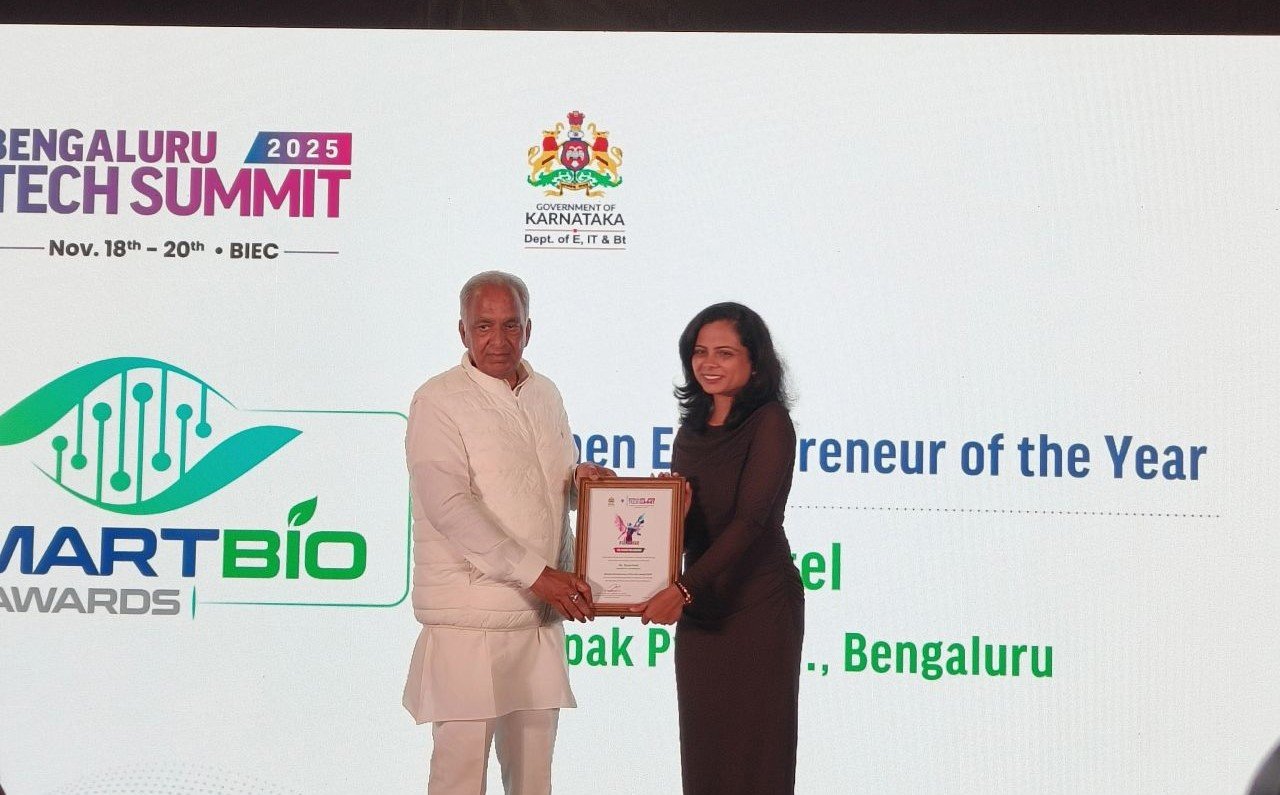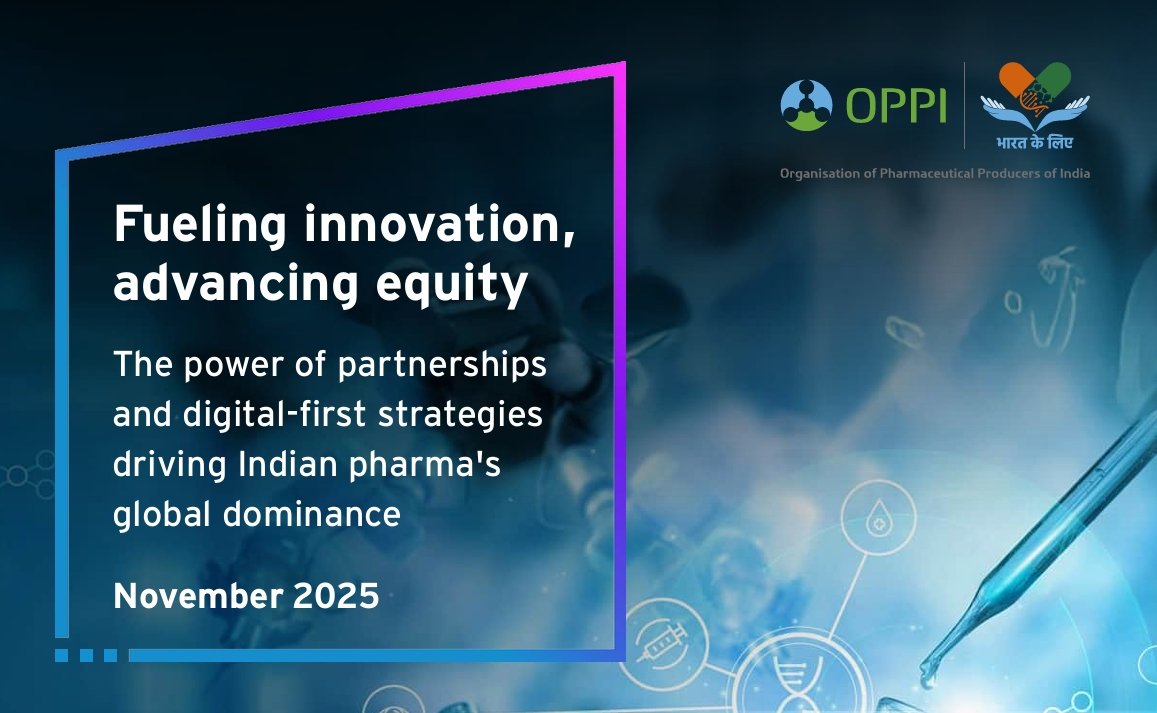Master of Innovation
December 09, 2010 | Thursday | News
He made a quiet entry into Indian life sciences industry in 1998,
taking over the reins of Glenmark Pharmaceuticals. Today, Glenn
Saldanha, MD & CEO of Glenmark Pharmaceuticals has set a benchmark
with a robust, burgeoning pipeline of NCEs and NBEs

Glenn Saldanha's is a
daring story of venturing into the high risk
space of novel drug discovery research. This, in a decade when
innovation was the most-used buzzword but there were few who took the
innovator path in drug discovery - where 10 years of work is just a
blink-and-a-half in the product cycle, and failure a norm.
Resolutely pursuing this path, Saldanha – in the process – has earned
for Indian life sciences industry a place on the global innovation map
and a taste for success. This, aside from growing his company manifold.
In fact, to over $500 million (

2300 crore) in turnover – from just
about $18 million (

82.8 crore) in 1998, when he took charge as
director.
Glenmark, under his leadership has expanded rapidly in discovery
research of small molecules and biologics, along with branded generics
and formulations. His steely determination and conviction has been
instrumental.
Enroute, he has faced bitter criticism but his detractors are now
eating their words with Glenmark securing its position as a respected
center for innovative drug discovery – both in small molecules and
biologics.
The Midas Touch
Glenmark Pharmaceuticals started operations in 1977 under Glenn
Saldanha's father, Gracias Saldanha. Named after his two sons, Glenn
and Mark, Saldanha Senior focused on the manufacturing and marketing of
formulations products in India. In just two years, the company crossed
breakeven point, recording profits of

26,363.72. Subsequently, the
company started exporting to semi-regulated markets, globally. And by
1981, the turnover touched the

1 crore mark. However, it was only
after Glenn Saldanha's entry as director in 1998 that Glenmark
Pharmaceuticals ascent on the steep growth curve began. Gracias
Saldanha retired from the company in the year 2000.
Glenn Saldanha came armed with work experience of few years in the US,
where he put in time with Eli Lilly and Pricewaterhouse Coopers. His
stint with these two well-known MNCs had a pivotal role in shaping his
beliefs and outlook towards the business. The exposure in the US also
provided him an opportunity to work with global pharma giants, such as
Merck, Bristol Myers Squibb and Johnson & Johnson. “My roots come
from my early years as an MBA student in New York University; and
working with Eli Lilly and Pricewaterhouse Coopers where, I acquired
most of my skill set, which gave me a headstart in India. Consulting to
the pharma business gave me a good insight into how the business
works,� says Saldanha.
He joined the company with a two-fold strategy in mind. “In 1998, about
99 percent of our business came from India. My game-plan was to
globalize our name and generate as much revenue as possible through
generics and re-invest some of the money in innovation and intellectual
property. The strategy was to bring out our products, outlicense it to
the US, Europe and Japan; and retain the rights with us for the rest of
the world (RoW), either by exclusive or co-marketing rights and build
infrastructure in RoW markets. So that when the molecule comes to
market – we would already have an infrastructure in place,� he reveals.
The company has been growing from strength-to-strength. For FY
2009-2010, Glenmark clocked an annual turnover of over

2500 crore,
which was a growth of 18 percent over the previous fiscal. In the
current fiscal it will easily cross

3000 crore. It has operations in
80 countries, with employee strength of nearly 7,000 people, globally.
Glenmark today has five research facilities, 13 manufacturing
facilities in four countries and seven new molecules in clinics.
The company's New Chemical Entity (NCE), Crofelemer, a first-in-class
anti-diarrhoeal drug, has successfully completed phase III trials for
HIV-related diarrhoea. Glenmark has exclusive marketing and
distribution rights for this compound for multiple indications across
140 countries. Saldanha anticipates approval of Crofelemer in India in
2012.
In the biologics space, Glenmark's lead products GBR 500 and GBR 600
have entered clinics. Saldanha is known for his acumen in signing
significant licensing deals with some of the big MNCs. In 2010, the
company entered into two landmark deals. Its subsidiary in Switzerland
granted a license to Sanofi-aventis for developing vanilloid receptor
and GRC 15300. The latter is currently in phase I clinical development
for treating diabetic neuropathic pain and osteoarthritic pain. The
subsidiary has also been granted a worldwide license by Italian-based
company, Lay Line Genomics (LLG) to its entire IP portfolio in the TrkA
field, which includes monoclonal antibody BXL1H5. This represents
another first-in-class opportunity for Glenmark.

“Researchers at Glenmark
focus on developing monoclonal antibodies.
Glenmark is the first Indian company that has a novel, first-in-class
novel biologic entity in the clinics in the US. We are establishing
platform technologies to develop biologics in a format specific for
Glenmark�
-Dr Michael Buschle, president (biologics), Glenmark
Pharmaceuticals
First Person

“Glenn Saldanha is one of
the pioneers
in making India's R&D story
a success. He has been a forerunner in making major licensing deals
possible. He has been careful in selection of his pipeline molecules by
taking all the stakes into consideration�
-Sujay Shetty, associate director (pharma & life sciences),
Pricewaterhouse Coopers, India

“Glenmark's focus on
pharmaceutical
generics business and drug
discovery research to fulfill the unmet needs of patients impresses me.
It takes a lot of guts for any leader to restructure an existing
successful business to create an expensive and high risk cost center to
invest in R&D�
-Tapan Ray, director general, OPPI

“Glenn Saldanha's vision of
an
innovation-led organization and his
drive and passion to achieve that vision has been a key differentiating
aspect for Glenmark. Today, the fact that Glenmark has several
molecules in clinical development for unmet medical needs is a
significant achievement for an Indian organization�
-AS Mohanty, executive director, Glenmark Pharmaceuticals
Forerunner in Drug Discovery
In 2000, while other companies were looking to capture a sizable share
in the generics space, Saldanha saw that to achieve a healthy growth
curve in future, Glenmark needed a paradigm shift towards the high-risk
space of novel drug discovery research. This was around the time when
India was a signatory to the GATT and was moving towards the product
patent regime. “What makes Glenmark unique is that we have been
extremely passionate about innovation, since the beginning of this
decade. There was a great opportunity for India to move into this space
because of the low cost of R&D; and we used that opportunity to the
maximum advantage,� he recollects. Glenmark took the IPO route, getting
listed in 2000. The company got oversubscribed 65 times and its market
capitalization touched $40 million. It then invested the proceeds in
setting up an R&D center in Mumbai to carry out innovative drug
discovery research - marking its first step into NCE discovery
This R&D centre is spread over 1,25,000 sq ft with over 200
scientists working on multiple targets in broad therapeutic areas, and
have been responsible for discovering 13 NCEs in a short span of nine
years.
The company thus pursued its innovation research with small molecules
from 2000-2004. While domestic companies were on the run to hive out
their R&D units, Saldanha opted to restructure his business into
two clear divisions – specialty and generics. “There are lots of
synergies between R&D and the branded generics side of the
business. Our mix is very clear – we have Glenmark Generics, which
focuses on branded generics and Glenmark Pharma, which is our
innovation engine. The reason for not hiving out the business is that
there were times when our R&D division supported the generics side
of the business and vice-versa,� he explains.
During 2005-2006, Saldanha realized that the innovation sphere was
changing - and the move was towards antibodies and biologics. “We saw
that the company needed certain skill sets in biologicals. This
prompted us to venture into it,� he says. The company then set up a
facility in Switzerland, Glenmark Pharmaceuticals SA, dedicated to
biologics research.
Why Switzerland? “To counter the skill set gap in India, we looked
overseas and assessed that Switzerland was a high benefit proposition.
Also, there is cutting edge research happening in the space of
monoclonal antibodies in Europe and a lot of talent is available,� he
elaborates. The current team comprises around 50 scientists, with
expertise in molecular biology, cell biology, immunology, antibody
engineering, quality control and quality assurance, process development
and biologics product development. Dr. Michael Buschle, who brings with
him 25 years of experience in biologics, heads the operations in the
capacity of president.
Operational since 2006, Glenmark Pharmaceuticals SA has filed several
patents on novel monoclonal antibodies. Lead product GBR 500, an NBE
under development for treatment of multiple sclerosis (MS) and other
inflammatory diseases, is undergoing phase I clinical trials in the US
and GBR 600 a monoclonal anti-platelet antibody, is ready to start
phase I trials in the UK. The market opportunities for both these NBEs
are huge. In the MS segment, GBR 500 has a market opportunity of up to
$3 billion while GBR 600 has a market opportunity of $2 billion. “We
have a whole pipeline of MAbs, and every year you will see one or two
MAbs going into clinical trials. This is all novel antibody work and we
have our own patents and IP,� he elaborates.
Biologics research at Glenmark Pharmaceuticals SA will look at
targeting areas like oncology, immunology along with RA and various
inflammatory conditions. The unit has capabilities to develop
monoclonal antibodies from inception to preclinical; and undertake the
necessary development work for clinical studies.
Saldanha believes that biosimilars is a big opportunity for Indian
biotech companies and while he may consider entering this space in the
future - he is convinced that novel biologics is the way ahead.
The Challenges
Saldanha's bold step into drug discovery space came with a host of
challenges. However, he stuck to his guns. “Back in 2000-2004 we got a
lot of flak from shareholders for investing in innovative research,
because they believed that a small company like Glenmark could not
deliver on innovation,� recalls Saldanha. It was a host of licensing
deals that bolstered investor confidence. In 2004, the company signed
its first licensing deal with Forest Labs for PDE4 Inhibitor, then in
2006, an outlicensing deal with Merck and in 2007, it out-licensed GRC
6211 to Eli Lilly. “That gave people a stronger belief that we know how
to play the game and how innovation can be done despite limited
resources. By 2007, we were the darlings of the investors,� he adds. By
then, the company's market cap touched $4 billion ( 18,339 crore).
18,339 crore).
In 2008, Glenmark faced major reversals. GRC 6211 was returned by Eli
Lilly, Merck terminated its dealfor GRC 8200, the Forest deal also
failed. This impacted the company's stock price and its valuation
adversely.
“The years 2008-2009 were dry years for us, people lost
confidence in Glenmark. But luckily, we had cash in hand, having spent
only half of about $125 million ( 550 crore) set aside for innovation.
Recession in the global economy added to our challenges,� he reveals.
550 crore) set aside for innovation.
Recession in the global economy added to our challenges,� he reveals.
By 2010, the company bounced back strongly. The deals with Sanofi
aventis and Lay Line Genomics, bolstered the investor morale; and
Saldanha hopes to see more such deals. “We have seen the whole cycle –
right from being nobody, with people doubting our capabilities to being
the darlings, and then plummeting down, and then starting all over
again,� he quips
Despite predicaments, the company's conviction and passion never
wavered. “Nothing has changed over the past 10 years. We still have
the same drive and motivation to innovate. We did not doubt the way we
built up the business, even in the dry period,� Saldanha asserts.
Nayantara Som in Mumbai




 “Researchers at Glenmark
focus on developing monoclonal antibodies.
Glenmark is the first Indian company that has a novel, first-in-class
novel biologic entity in the clinics in the US. We are establishing
platform technologies to develop biologics in a format specific for
Glenmark�
“Researchers at Glenmark
focus on developing monoclonal antibodies.
Glenmark is the first Indian company that has a novel, first-in-class
novel biologic entity in the clinics in the US. We are establishing
platform technologies to develop biologics in a format specific for
Glenmark� “Glenn Saldanha is one of
the pioneers
in making India's R&D story
a success. He has been a forerunner in making major licensing deals
possible. He has been careful in selection of his pipeline molecules by
taking all the stakes into consideration�
“Glenn Saldanha is one of
the pioneers
in making India's R&D story
a success. He has been a forerunner in making major licensing deals
possible. He has been careful in selection of his pipeline molecules by
taking all the stakes into consideration� “Glenmark's focus on
pharmaceutical
generics business and drug
discovery research to fulfill the unmet needs of patients impresses me.
It takes a lot of guts for any leader to restructure an existing
successful business to create an expensive and high risk cost center to
invest in R&D�
“Glenmark's focus on
pharmaceutical
generics business and drug
discovery research to fulfill the unmet needs of patients impresses me.
It takes a lot of guts for any leader to restructure an existing
successful business to create an expensive and high risk cost center to
invest in R&D� “Glenn Saldanha's vision of
an
innovation-led organization and his
drive and passion to achieve that vision has been a key differentiating
aspect for Glenmark. Today, the fact that Glenmark has several
molecules in clinical development for unmet medical needs is a
significant achievement for an Indian organization�
“Glenn Saldanha's vision of
an
innovation-led organization and his
drive and passion to achieve that vision has been a key differentiating
aspect for Glenmark. Today, the fact that Glenmark has several
molecules in clinical development for unmet medical needs is a
significant achievement for an Indian organization�






